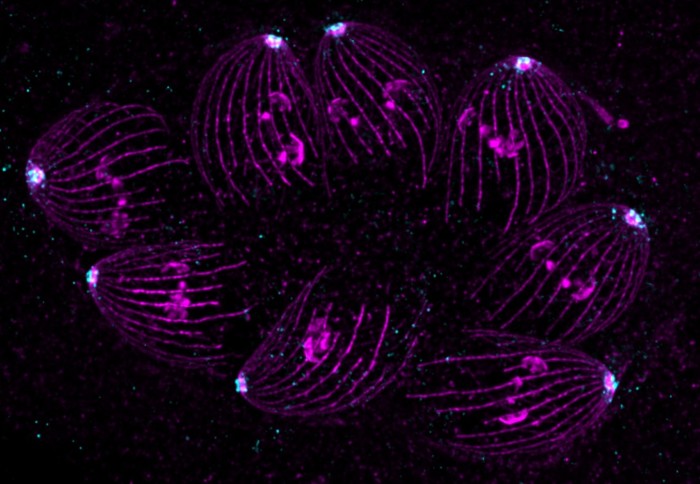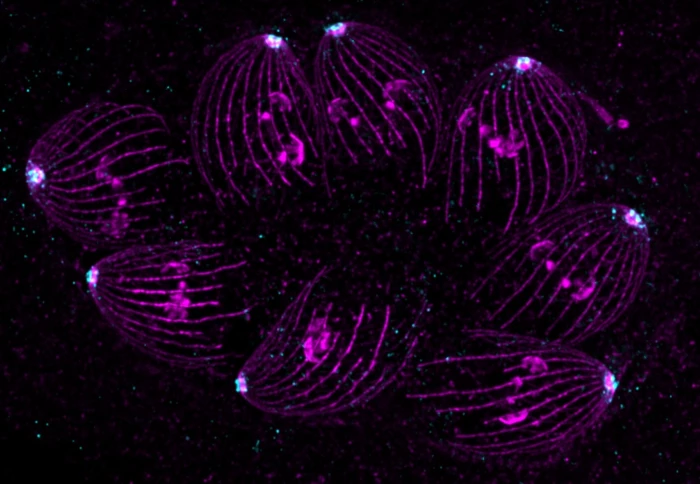Endurance rowing, parasites and clean clouds: News from the College


Here’s a batch of fresh news and announcements from across Imperial.
From rowing the Atlantic, to uncovering how parasites move, here is some quick-read news from across the College.
Endurance rowing
In December 2022, a team including a PhD student in the Department of Bioengineering tested their endurance by rowing unsupported across the Atlantic. For this extreme challenge, they teamed up with some researchers at Imperial, including OG Carbon, a startup founded by Owen Griffiths, a PhD student in the Department of Chemistry.
During the 40-day journey, the team took daily urine samples and used OG Carbon’s low-cost and compact electrode platform to test their haemolysis levels – a measure of how blood haemoglobin levels change as a result of excessive endurance exercise. During intense exercise, red blood cells can be damaged and rupture, which releases haemoglobin into the body. While haemoglobin is normally used to carry oxygen inside the red blood cell, outside it can be toxic and lead to kidney damage.
The rowing team were able to use the equipment to take measurements in all conditions, from rain and storms to hot and cold weather – although sometimes it took a couple of attempts! The results will be used to study the effects of ultra-endurance competitions on the body and further research into haemolysis and effective diagnostic platforms.
Parasites in motion
The transmission of these filaments is orchestrated by a large and unique protein called the glideosome-associate connector protein (GAC), but how exactly it does this was unknown. Now, Department of Life Sciences researchers have found the GAC protein has ‘open’ and ‘closed’ states, which are important for its assembly and its response to the forces generated at the interface of the parasite and host cell surfaces.
Lead researcher Professor Steve Matthews said: “GAC is essential for crossing of biological barriers, host cell invasion and escape from infected cells. Our findings could help the search for new therapeutic approaches against apicomplexan parasites which represent a significant global health challenge.”
Biochemical Society award
Dr Schumann and his team study sugar molecules called glycans, which cover every cell in the human body and are involved in processes that are essential for life. However, small changes in glycans can have a profound impact on metabolism or on mounting immune responses against pathogens.
The team develop chemical precision tools to investigate glycan biological processes such as which molecular machines build and modify which glycans (GlycoTrackers), and using glycans to tag cancer biomarkers.
Dr Schumann said: “I am extremely grateful to be receiving this award which is a testament to my group’s hard work. The Biochemical Society provides an outstanding platform to forge connections, allowing us to establish our chemical ‘precision tools’ in modern quantitative biology.”
Clean clouds
Aerosol pollution, such as soot or sulphur dioxide, creates nuclei around which cloud droplets can form. This creates more droplets in a cloud and increases its reflectance, potentially helping to reduce incoming solar radiation.
New research shows that scientists’ current models of how aerosol pollution affect clouds are reliable when there are lots of aerosols, but they don't agree on the behaviour of clean clouds. These clean clouds are difficult to observe in the atmosphere today, but were very important in the days before the industrial revolution. Understanding these clean clouds is vital to capture the human ‘forcing’ – what effect human activities have had.
First author Dr Ed Gryspeerdt, from the Grantham Institute – Climate Change and the Environment, said: “Paradoxically, this means that if we want to understand how increased pollution changes clouds, we need to spend more time looking at cases with little pollution.”
Read the full paper in Atmospheric Chemistry and Physics.
Article text (excluding photos or graphics) © Imperial College London.
Photos and graphics subject to third party copyright used with permission or © Imperial College London.
